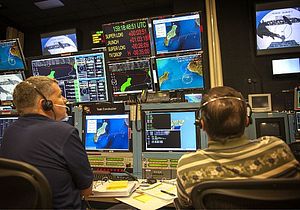The United States, Japan, and South Korea conducted a joint missile-tracking drill off Hawaii this week as part of their ongoing trilateral engagement in the face of North Korean aggression.
Pacific Dragon is a trilateral ballistic missile defense (BMD) tracking event between the United States Navy, the Japan Maritime Self Defense Force, and the Republic of Korea Navy. The exercise focuses on improving coordination among participants in several related areas, including the detection, tracking, and reporting of ballistic targets.
The third biennial exercise was conducted from June 20-28 off the coast of the Pacific Missile Range Facility (PMRF) in Kauai, Hawaii. It came after a series of test firings of the Musudan intermediate-range ballistic missiles by North Korea, the sixth of which was characterized by experts as at least a partial success.
The activity that received the most attention this year was what the U.S. Navy described in a press statement as a “coordinated live ballistic target tracking event,” which saw each nation’s Aegis Ballistic Missile Defense System capabilities tested and improved. According to the statement, all participants also shared tactical data link information in accordance with an existing trilateral information sharing agreement.
Though no missiles were fired, the statement said participants were able to strengthen interoperability, communication channels, data collection, and capabilities assessments.
Predictably, Pyongyang reacted angrily to the exercise, vowing to boost its offensive capabilities.
“The drill staged in the Pacific Ocean was another military provocation against the DPRK and a revelation of their hegemonic scenario for disturbing regional peace and security,” a spokesman for the Disarmament and Peace Institute of North Korea’s foreign ministry said, according to the Korean Central News Agency.
“Now that the U.S. and other hostile forces are posing a constant threat to the security of the DPRK and the region by frequently staging joint military exercises, the army and people of the DPRK will bolster in a sustainable manner the capabilities for preemptive nuclear attack to pose a constant threat to the enemies, and put spurs to research and development of diverse strategic attack weapons,” the spokesman said.

































